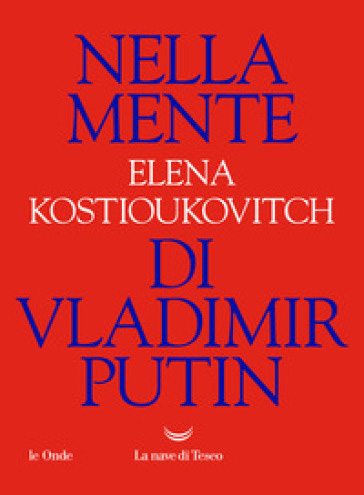Rome was already overpopulated in ancient times. The number of foreigners was equal if not superior to that of the residents. After the fall of the Empire and the triumph of Christianity, Rome became the destination for all the pilgrims of the Christian world, as well as for ordinary travelers. Not only that but, as the headquarters of the Church, it was also the residence of clergymen and papal officials.
With this new physiognomy, the city, both sanctuary and teeming hostel, adapted almost naturally to the rhythms and requirements of the religious calendar (see CALENDAR) imposed by the sacredness of the location. As Massimo Petrocchi tells us in his collection of historical testimonies to Roman life in the Baroque Rome of the seventeenth century, the observance of fasting imposed strict discipline on the inhabitants, even in their dietary habits. To avoid committing the sin of gluttony, one of the seven capital sins, the Romans, with a charming sense of humor, managed to find loopholes to satisfy their appetite both on feast days, as well as on days of abstinence. The high-ranking clergy, not having “supervisors”, at least not in this world, seemed to be free of such concerns.
Despite all the talk about fasting, Roman pontiffs were certainly not distinguished for their asceticism. The “Boniface VIII timbale”, still known today, takes its name from the pope who held office from 1294 to 1303: the one who proclaimed the first jubilee (see PILGRIMS). This succulent dish includes macaroni, meatballs, chicken gizzards, and whole slices of truffles, all contained in a pastry crust. The next Boniface, Boniface IX (1389-1404), adored liver meatballs, the so-called “tomaselli”, derived from his secular name, Tomacelli.
Beginning in the sixteenth century, papal passion for elaborate dishes grew. The illustrious humanist and papal gastronomer Platina, 1 in his biography of pontiffs as viewed by their chef, writes of Paul II who demanded a wide variety of dishes at his table and always praised the worst ones. At times he shouted, when he did not find his favorite foods at dinner. He drank a lot, though only the most ordinary wines, and on top of that he watered them. He loved shrimp, timbales, fish, salt pork, and melons, so much so that he was killed by a stroke: the night before he died, he ate two huge melons without leaving a morsel in his plate (Liber de vita Christi ac omnium pontificum, 1479).
Leo X (pope between 1513 and 1521), a member of the Medici family, brought from Florence the lavish culinary customs of his city even before Catherine de’ Medici conveyed them to the court of France. As understood by the lords of the Medici dynasty in the sixteenth century, “Florentine customs” signified a return to the traditions of crass imperial Rome, made up of endless, extravagant banquets, with long disquisitions about food. The Roman who wanted to be seen in a good light and be admitted to the curia, shook the dust of the Lazio countryside off his shoes and, renouncing the simple food of his ancestors, agreed to sit amidst luxurious marbles and furnishings at Lucullean feasts of Florentine tastes, even willing to laugh at the popes’ jokes: Leo X for example, who liked to amuse himself at the expense of his guests, had hemp ropes served instead of eels, so that the unfortunate dinner guest had to chew and choke on them for the entire evening.
Giuseppe Prezzolini was able to sketch a lapidary but incisive portrait of Rome and the customs of that time in his vivid, scathing style:
Rome was caput mundi, the world's latrine, headquarters of the universal leprosy. It was a country of gang wars, imposing ruins, puddles, chronic malaria, general filth, luxury and beggary hugger-mugger neighbors. Witches were burned there and in the Vatican there were courtesans and astrologers. There Luther was excommunicated and Christ sold by the hour. A continual congress was held there of pimps, gluttons and rascals, innocents and saints. To the better contemporaries Rome was Sodom, Gomorrah and Babylon rolled into one. [...] The Pope had his minions, his sons, his concubines. He would fatten his cardinals to slaughter them, when they were prime with coin: jingle-bell, jingle-bell, report in hell. The cardinals had sons and nephews. [...] [...] Certain Popes loved the table better than war. (Prezzolini, Nicolo Machiavelli, the Florentine, Ralph Roeder, tr., pp. 50-51)
Towards the middle of the sixteenth century Julius III (pontiff between 1550 and 1555) ascended to the papal throne. As we know from biographies of the time, this pope spent the final years of his pontificate in a sumptuous villa on the outskirts of Rome, giving himself up to worldly pleasures. “A young adventurer, named Innocent, was raised to the rank of cardinal by him and became the all-poweful alms distributor at the papal court. Many relatives of the pope, though undeserving, received important ecclesiastical positions and ranks”, writes the Russian encyclopaedic dictionary Brockhaus-Efron.
With regard to this Innocent, 2 it appears from the daily logs of the papal cooks that each day he had stuffed peacocks (a food of wealthy aristocrats, certainly not of penitents) and onions from Gaeta (their aphrodisiac virtues are legendary) brought to the pope’s private rooms.
Paul IV, who became pope shortly thereafter (he was pontiff between 1555 and 1559), could remain seated at the table for as long as five hours, sampling 20 courses in a row.
By contrast Pius V (pope between 1566 and 1572), who was later canonized, led the Church back to austere simplicity. A Dominican and fanatical persecutor of heretics, he had been an inquisitor before becoming pope. Once he donned the papal tiara, he banned secular feasts in Rome. Nobles who violated this injunction had to pay a fine. For all others, a first violation required a religious penance, the second a public thrashing, and the third a jail sentence. Disciplines and regulations introduced in the monasteries were so strict that not everyone was able to endure them. The inquisition punished crimes committed twenty years earlier, and the pope never mitigated the sentences. On the contrary, if there were too few executions, he rebuked the judges for not showing enough zeal. Pius V was free of vices, nepotism and spinelessness (he excommunicated Elizabeth I of England) and ate without witnesses. Nevertheless his private chef – who as luck would have it was not only a gastronomic expert, but also a literary talent – left us direct testimony concerning his appetite. This chef was none other than Bartolomeo Scappi, cited several times in this book, author of the first major Italian recipe book and reformer of Western European cuisine. In his volume of 1570, Opera dell’arte del cucinare (On the art of cookery), Scappi described several of the pope’s favorite dishes, such as freshwater fish from Lake Garda, saltwater fish from the Ligurian sea, and black caviar from Alexandria, Egypt.
From the book, and from what we know in general about chef Scappi’s creative ways, it is clear that Pius V did not indulge in elaborate, dramatic foods, but as a refined gourmet preferred sobriety. The pope insisted on absolute formal observance of religious laws concerning fasting, and the cook, on his part, could only rejoice at this, since he could not stand the extravagance of the Florentine popes and wanted to follow the principles of an authentically Renaissance cuisine, which involved harmony and equilibrium.
In 1549 Scappi had to provide meals for the cardinals assembled in conclave to elect the man who the following year would be proclaimed pope Julius III. He was so talented in the kitchen that thanks to his services the prelates, excellently fed, managed to pleasantly get through their confinement of more than two months. This decreed his success: once elected, Julius took him on as his “secret” or personal chef. Scappi remained in service throughout Julius’ pontificate, afterward serving another six popes.
English translation copyright © 2009 by Anne Milano Appel


